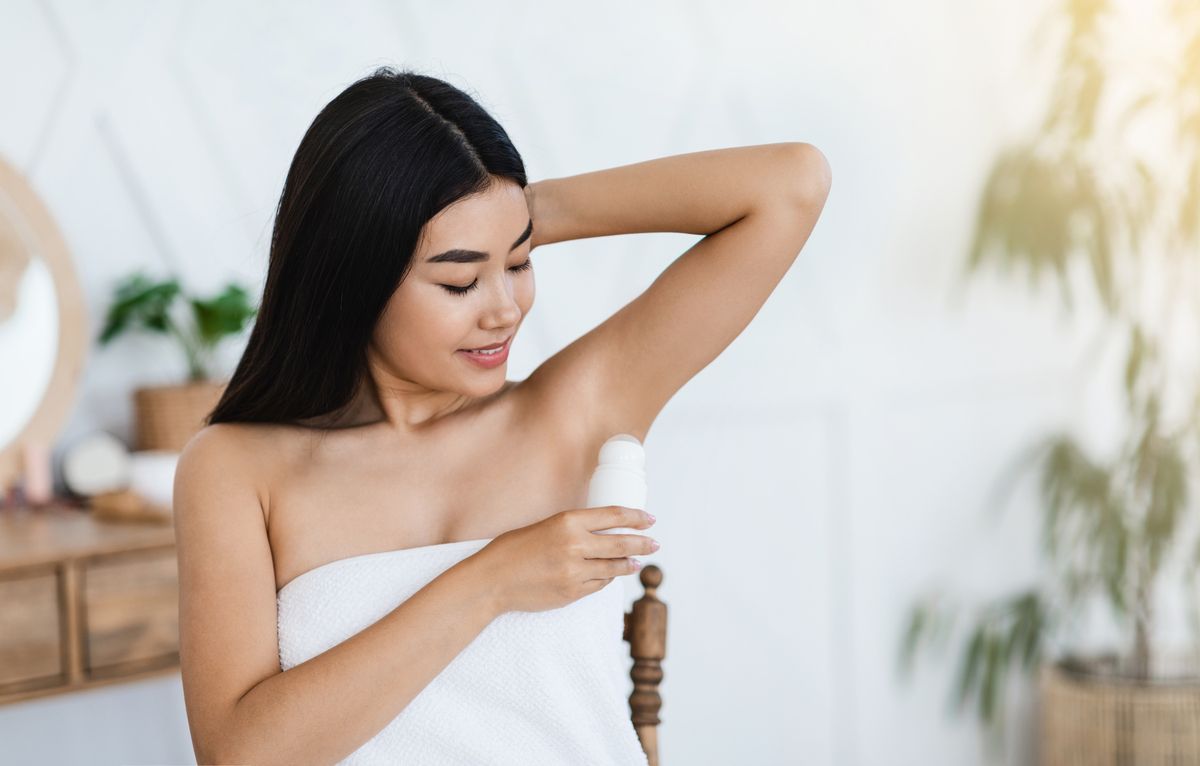
When you’re at the store, selecting a deodorant, there are always lots of options. Various brands, different scents, and many people make the mistake of selecting their deodorant based on the scent they like most, or the brand they like most.
Unfortunately, what many people don’t realize, is that the right thing to look for in a deodorant is actually whether or not it is a natural deodorant.
If you purchase a regular antiperspirant from a drug store that is not a natural and non-toxic deodorant, you’re putting yourself at an unnecessary risk. You’re exposing yourself to toxic chemicals and harmful ingredients commonly found in regular sticks of deodorant.
One of the primary benefits of using natural deodorant is you don’t have to worry about the risk of these harmful ingredients. Reading the ingredient label on a deodorant before you buy it is a must, but it’s best to buy a natural deodorant from a specialty store or order one online. Here are some examples of aluminium-free, good quality natural deodorants.
The following ingredients found in a conventional deodorant are a cause for concern:
1. Aluminum
Aluminum is a metal that’s commonly included in deodorants and antiperspirants, unless it specifically states that it’s an aluminum-free deodorant. Aluminum salts plug the sweat glands and prevent them from surfacing into the pores, which is why this ingredient is added. However, aluminum promotes cell genomic instability, which means it promotes cell mutation, which could increase the propensity for tumor growth. On top of that, Dr. Benjamin Chan says that aluminum is a concern if you have reduced kidney function, since your kidneys filter out excess aluminum from deodorants and cosmetics, which is absorbed through the skin. Moreover, he notes that aluminum could increase the risk of bone disease and dementia.
2. Triclosan
Many deodorants include triclosan because it supposedly kills germs that cause body odor. However, studies indicate that triclosan disrupts the endocrine system by mimicking hormones and interfering with their signals. On top of that, antibacterial chemicals are also associated with an increased risk of breast cancer. Since a lot of data point out potential health concerns with triclosan use, the FDA has banned it for use in hand soaps. Unfortunately, the FDA still allows the use of triclosan for products like deodorants because they supposedly come in smaller quantities.
3. Phthalates
This is a common ingredient in personal care products like deodorants since it helps in making the final product more flexible and pliant. It is also utilized to extend the life of fragrances infused into the product. However, just like triclosan, this chemical could disrupt the endocrine function, especially in males. On top of that, early exposure to phthalates could impact female reproductive health potentially resulting in the early onset of puberty and an increased risk of breast cancer in the later years.
4. Parabens
These chemicals are typically used in conjunction with other chemicals for preservation purposes. They act as preservatives in personal care products, preventing the growth of fungi, molds, yeast, and bacteria. However, parabens could be unfortunately absorbed through the pores. Sadly, studies attest that parabens impersonate hormones and are a good copycat of estrogen, and excessive exposure to that is linked to breast cancer. However, the FDA still permits parabens because the amount included in personal care and cosmetic products is weak and minimal, so testers say they are not enough to result in breast cancer.

5. Artificial Fragrances
When you look at the deodorant shelf in the grocery, you will notice each brand comes with its own unique fragrance. Sadly, fragrance is not straightforward and usually contains many raw materials. Since fragrance is a trade secret that makes a product unique, most brands don’t disclose what these specific ingredients are. Hence, non-disclosure means you have no idea what these raw materials are and how they could impact your health. Some companies put in generic terms like synthetic musk, which is also a substance of concern.
6. Diethanolamine
If you read your deodorant ingredient list, you may find this diethanolamine compound, sometimes abbreviated as DEA. Be wary of using it because it is linked to cancer. To produce diethanolamine, the product undergoes ethoxylation which then releases a byproduct called dioxane, a known carcinogen.
7. Butane and Isobutane
If you use aerosol or spray-on deodorants, you may find these two gasses as they are propellants that make your spray work. These two are toxic products that are linked to cancer. They have been banned by Canada and the European Union, but the US and other countries have yet to impose restrictions.
8. Propylene Glycol
This chemical is responsible for giving a deodorant stick its firm shape and firm texture. However, some people have an allergic reaction to this additive, resulting in inflamed or itchy skin.
Switching to Natural Deodorants: The Bottom Line
Natural deodorants might not last as long or be quite as effective as a drug store brand antiperspirant, but they still work.
For natural sweat absorption, some natural deodorants are formulated with activated charcoal, which is an ingredient known for its ability to absorb bacteria and toxins. That includes the bacteria that causes body odor.
Other natural ingredients are added to make natural deodorants smell good.
To find out your genetic body odor traits, as well as how likely you are to sweat an above-average amount based on your DNA, you can take a CircleDNA test. This at-home DNA test is the world’s most comprehensive DNA test which provides you with hundreds of reports about yourself, based on your DNA. You’ll learn about your physical traits, health risks, personality traits, success traits, the optimal diet for you based on your DNA, and more.






